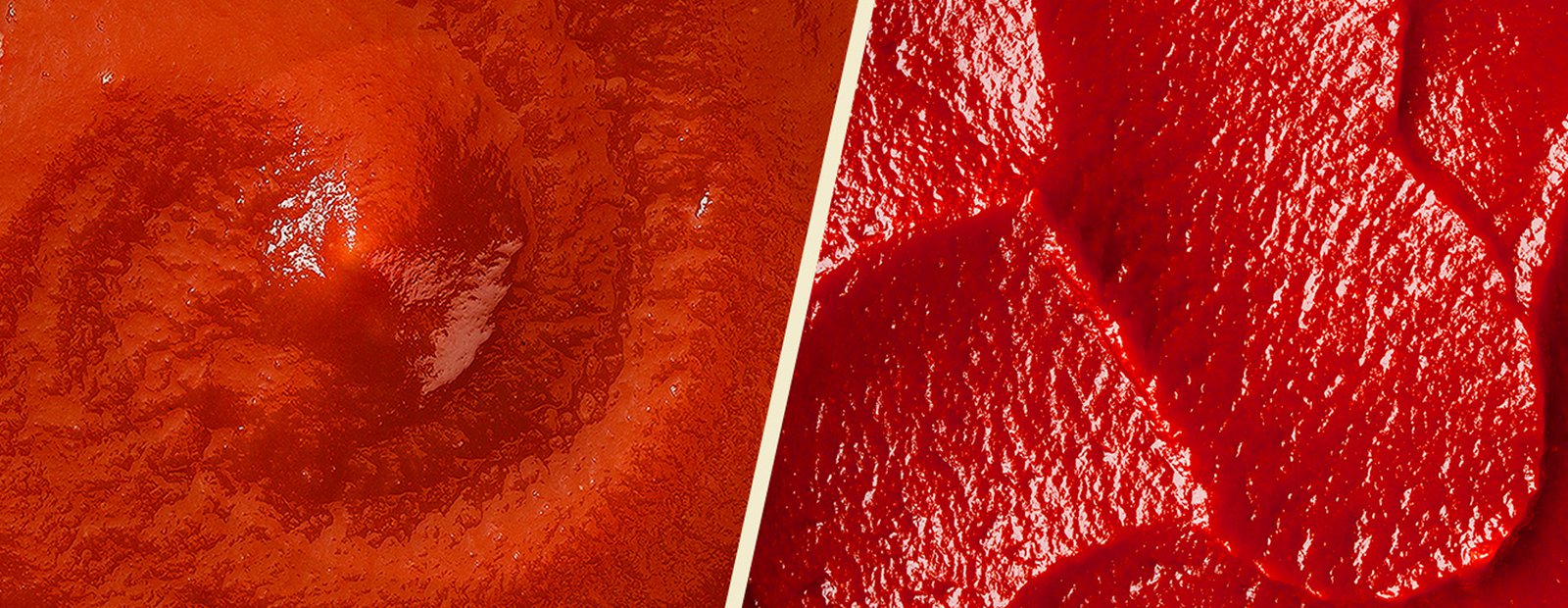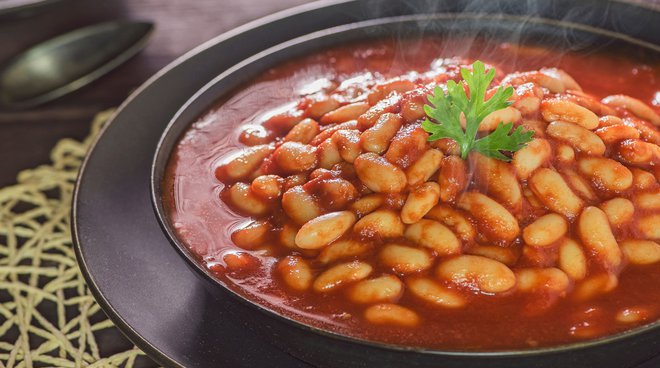Pulp, Passata and Related Products
TOMATO PUREE OR TOMATO PASTE: WHICH SHOULD YOU CHOOSE FOR YOUR DISHES?
Tomato puree, also known as ‘passata’, is an essential ingredient in traditional Italian cuisine.

But what are the real differences between tomato puree and tomato paste? And what characterises tomato pulp and diced tomatoes? How do you know when to use one or the other?
In this article, we will find out which tomato sauce to choose for our dishes, combining the different types, just as Italian chefs do. Making sure we choose the right combination is essential for the dish to be successful.
The difference between tomato puree and tomato paste
Pomì tomato puree is a product obtained by grinding fresh tomatoes, having first removed their skin and seeds. This results in a smooth and even-looking puree. Its flavour is unique and unmistakable, like that of an authentic fresh tomato.
Tomato paste, on the other hand, comes from cooking and concentrating the puree. This process makes the sauce thicker, darker and more intense in flavour, and is used to give preparations a richer and fuller taste.
When do you use tomato puree in cooking?
Tomato puree is perfect for preparations where a delicate and consistent flavour is desired. It is the perfect ingredient for sauces, soups, and for any recipe that requires a smooth and light tomato base. Think of a delicious plate of spaghetti al pomodoro, seasoned with a pinch of basil to enhance the aroma of the sauce, or a tomato soup served with croutons.
In which recipes should tomato paste be used?
Tomato paste has an intense flavour, making it perfect for preparations that need a robust touch of tomato. It is used in small quantities to enrich the flavour of ragouts, stews, marinades and dishes that need to be cooked for a long time. A classic example would be a rich meat sauce, or a lasagne sauce.
An Italian chef's trick: when do you use diced tomato sauce?
Besides tomato puree and paste, another product loved by Italian chefs is diced tomato sauce. This features whole or partially crushed pieces of tomato, retaining their consistency, and is perfect for dishes where a more rustic texture and genuine flavour is desired.
Pomì diced tomatoes actually have great potential when it comes to fish dishes. Their balanced freshness and acidity create an ideal combination that enhances the flavour of both ingredients. So, whether it is a pasta sauce with prawns and courgettes, or a base for a Mediterranean-style fish soup, Pomì diced tomatoes give the dish depth and complexity without overpowering the main flavour of the fish.
Fish and tomato? Try it with Pomì diced tomatoes!
Many Italian chefs also use diced tomatoes when preparing sauces for seafood risottos, where the tomato provides a contrasting colour and flavour, or in mussels alla marinara, where the juice of the tomato blends perfectly with the flavour of the mussels, creating a rich, delicious sauce.
However, diced tomatoes can also be used in other pasta sauces where pieces of tomato are desired, or in Italian recipes such as chicken cacciatore or peperonata.
Pomì is here to bring you the best Italian tomatoes for every recipe.
When it comes to tomatoes, quality is essential. With its wide range of tomato products, Pomì always guarantees maximum freshness and authenticity. Proud to offer only the best of our tomatoes from a sustainable supply chain, Pomì brings the delicious taste of 100% Italian tradition to your recipes.
Discover the secrets of Italian cuisine with Pomì!
NEWS
ALSO IN FOOD TRENDS
Pulp, Passata and Related Products
Vegetarian cooking: Middle Eastern recipes with tomato sauce
Vegetarian cuisine has deep roots in many cultures, and Middle Eastern cuisine is by no means an exception.
Pulp, Passata and Related Products
How to prepare real Italian spaghetti with Pomì ingredients
How can you prepare Italian spaghetti? This delicious first course is to all intents and purposes one of the most famous icons of Mediterranean cuisine.
Pulp, Passata and Related Products
Italian taste meets the Middle East: recipes with Italian tomatoes
When the vibrant flavours of the Middle East merge with Italian tomatoes and the culinary tradition of Italy, dishes are born that are nothing less than an ode to the harmony of tastes.


